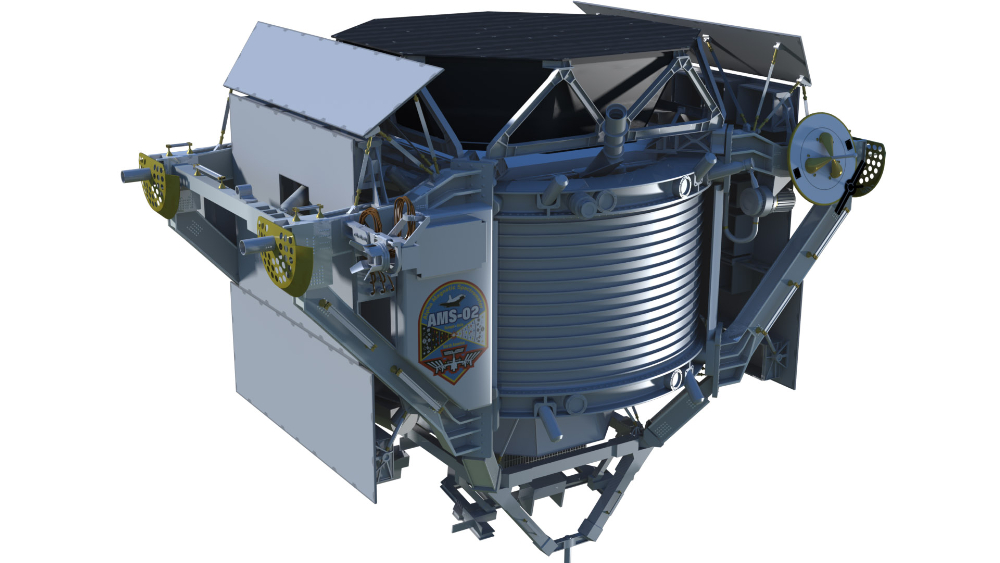
 Credit: NASA; DOE; MIT
Credit: NASA; DOE; MIT
What's the Matter with the Big Bang?
The Universe was born in a surge of radiation termed (perhaps disdainfully) by Fred Hoyle as the "Big Bang". Matter in the Universe was formed as this radiation broke apart into the elementary particles creating the stuff we see today. But matter has its mirror side, anti-matter, and most models of the Big Bang predict that matter and anti-matter should have been formed symmetrically in equal amounts. The Milky Way, at least, is mostly composed of matter (except for some interesting regions near the Galactic Center and elsewhere). What caused this discrepancy? Scientists should soon have a powerful new tool to answer this important question. The tool is known as the Alpha Magnetic Spectrometer, or AMS for short. The AMS (shown above) uses a powerful, supercooled magnet as a detector of high energy charged particles accelerated by the largest particle accelerator in the Universe, namely the Universe itself. The AMS will put stringent limits on the amount of anti-helium in the Universe, which in turn will put strong constraints on models of the creation of our material universe. The AMS may also solve another cosmic riddle, the nature of dark matter, by measuring the signature of the annihilation of this strange stuff in space. The AMS is now scheduled to fly on the International Space Station in 2010.
Published: August 17, 2009
<
HEA Dictionary ● Archive
● Search HEAPOW
● Other Languages
● HEAPOW on Facebook
● Download all Images
● Education ● HEAD
>
Each week the HEASARC
brings you new, exciting and beautiful images from X-ray and Gamma ray
astronomy. Check back each week and be sure to check out the HEAPOW archive!
Page Author: Dr. Michael F. Corcoran
Last modified Tuesday, 27-Feb-2024 10:13:20 EST


